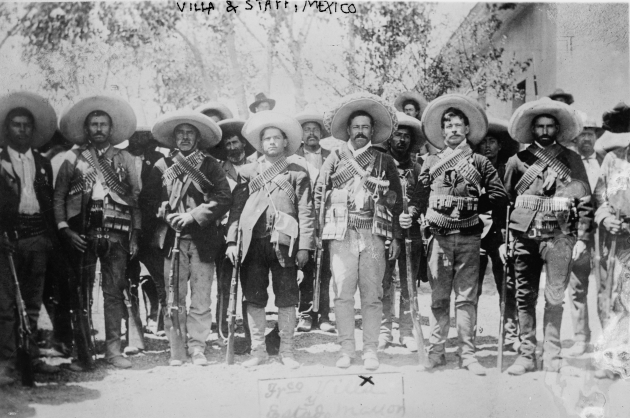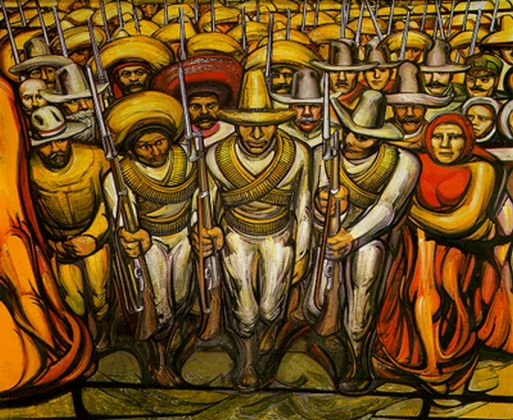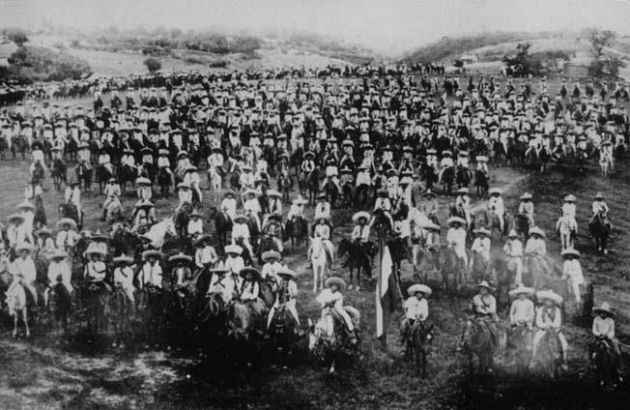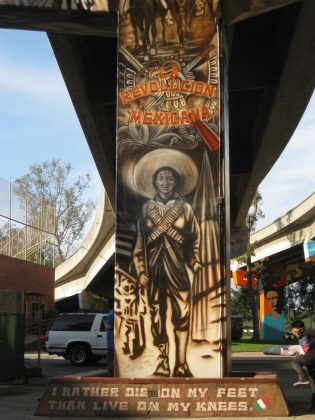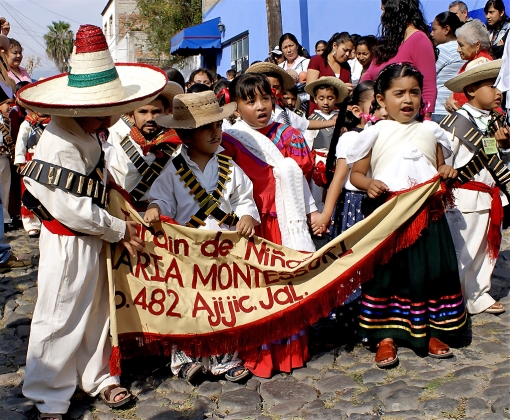But "the death in fight is better, than life of the slave"
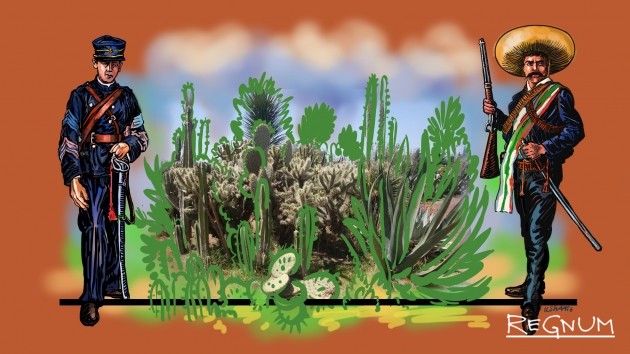
on November 20 Mexico celebrates the main holiday of the country — Day of revolution. In the country passes military parade, colourful carnivals and processions. The Mexican revolution occupies an interval of time in seven years: 1910 — 1917. However, some historians consider that this event came to the end only in 1920.
the Mexican revolution had p enormous impact not only on political system of the country, economy, but also on a development of education, architecture, a cinema and theater. Mexico left updated this revolution. And slogans of the Mexican revolution still are an official basis of activity of Institutional and revolutionary party Mexico: sovereignty, freedom, democracy, social justice. Let's remind that the president of the country — Penya Enric presents to Nyeto this political force. Though, style of its board and made decisions already are very far from ideals of the Mexican revolution.
Mexico paid for revolution at the price of big human losses. According to different data, during these events was lost from 500 thousand to 2 million people. Let's note that the country population for 1910 made 15 million. And results of revolutionary changes did not lead to that society of which participants of revolutionary events dreamed. As the Mexican writer Ermilio Abreu Gómez wrote, "revolutions opened deep wounds, without having given means to their healing".
Following the results of revolution, positions of the foreign capital in the country were weakened, the national bourgeoisie had opportunities for development, resistance shown by United States of America, prevented further foreign aggression. In 1917 the country Constitution where the land reform reflecting expectations of the simple population was declared was adopted. Namely peasants were a basis and a social base of the Mexican revolution. However, land reform was slowed down. Excitements among the Mexican population also did not end in 1917, having generated some more revolts. In 1926 the revolt caused by rigid implementation of anti-clerical provisions of the Constitution of 1917 flashed. And in 1994 in staff State of Chiapas there was a revolt of Sapatistsky army of national release. It is called in honor of Emiliano Sapat Zapata — the leader of the insurgent organization supporting the rights of the Indian peasantry, the national hero of Mexico.
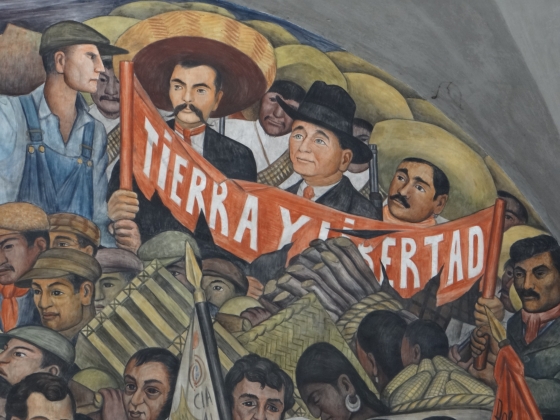
it is natural that such situation could not but lead to social explosion. Country masses was a driving force of revolution. But the structure of those who supported liberal and democratic changes was motley. Among supporters of revolution there were also representatives of ruling class, including, from military elite.
Issledovatelyami four stages of revolution are allocated. First stage: November 1910 — May, 1911 when liberal latifundists, representatives of the national bourgeoisie, workers and peasants stood together. During the second stage: May, 1911 — February, 2013, in power there were liberal democrats absence of unity among which led to counter-revolutionary coup. In the period of the third stage: February, 2013 — July, 2014 revolutionaries could stand together and restore the constitutional mode. The last stage of revolution when in the country civil war between the revolutionary peasantry and a moderate wing of liberals flashed became the most dramatic. During war won against moderate forces.
In February, 2017 adopted the Constitution of Mexico which works still. It was from now on allowed to own the earth to rural communities, Indian tribes and inhabitants of certain ranches. The earth of communities appeared inaliennable. The constitution provided carrying out an agrarian reform with the section of latifundiya and investment of peasants with the earth . All natural riches also appeared state property. In the constitution equality of all citizens was proclaimed, were guaranteed
Odnako, in reality if in the first third of the twentieth century 80 million hectares of the earth, during the period from 1989 to 1994 only 520 hectares were distributed. The similar policy caused indignation of country people and led in 1994 to creation Sapatistsky army of national release . Revolution is not finished by sup and fight of Mexicans for justice proceeds. And familiar expressions to Emiliano Sapat still call to fight for a world reorganization. To it attribute the well-known phrase "Better (or I prefer) it being necessary to die, than to live on a lap" which repeated Dolores Ibarruri and. Ernesto Che Guevara. And also, some other statements: And also some other statements: "Ignorance and obscurantism never created anything, except crowds of slaves for tyranny", "The death in fight is better, than life of the slave"
Istoriki still on a miscellaneous estimate not only dates of the Mexican revolution, but also efficiency of its results. Dominating assessment among the Mexican intellectuals, is the point of view sounded by professor Frank Tannenbaum: "In Mexico was not Russo , Voltaire , Monteskyyo , Diderot … In Mexico was not Lenin ". Events of revolution are estimated positively, but its spontaneous character is emphasized. According to the alternative point of view, revolution was revolt of the bandits who have united with Indian leaders — kasikami. However, such approach is not supported by the majority of researchers. As well as opinion that peasants were a blind toy in hands of the Mexican elite.
However if political economic and international consequences of the Mexican revolution are differently estimated by experts, its influence on culture and art does not raise doubts. In the 20th began sup intensive development of the fine arts and the literature, become history under the name "Mexican Renaissance". At the heart of it there was a national originality, In painting there was a movement "Mexican monumentalizm". There was the whole movement of independent folk theaters. The cinema blossomed. The American and European artists, poets, cinematographers addressed to a subject of the Mexican revolution. To Russians of an event of the Mexican revolution Eyzenshteyn Sergei are known according to the movie: "Long live Mexico"
Meksikansky the artist Sikeyros Davide wrote:" We left a hearth of war by other people, artists of new type. The Mexican revolution, the moment of deep historical crisis, set us thinking on the homeland, on our past, on our problems, she forced us to do a bit of traveling over the country and to reflect on our essence, to contact with our traditions and customs. Revolution forced us to see and to estimate national spirit which became for us revelation".
